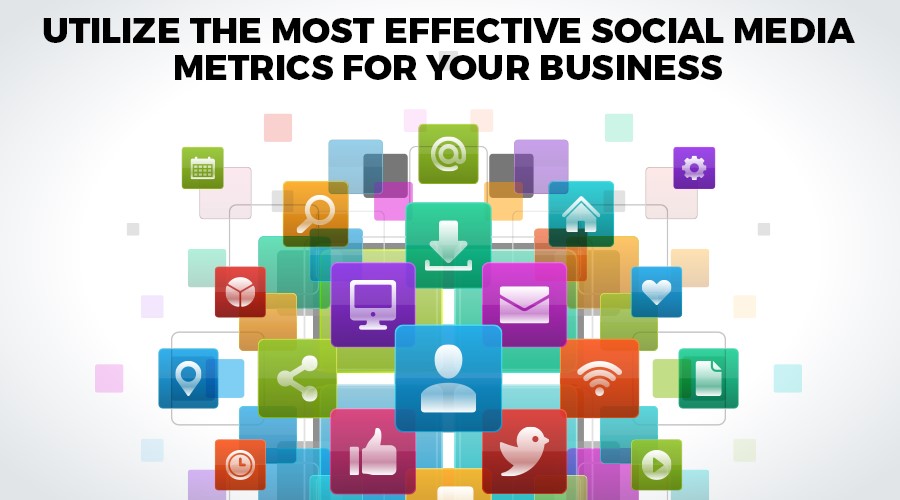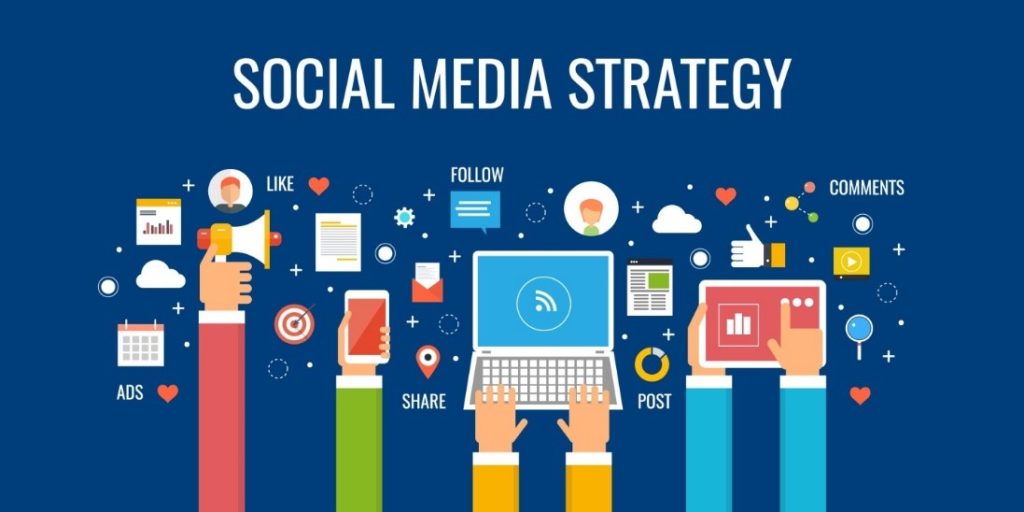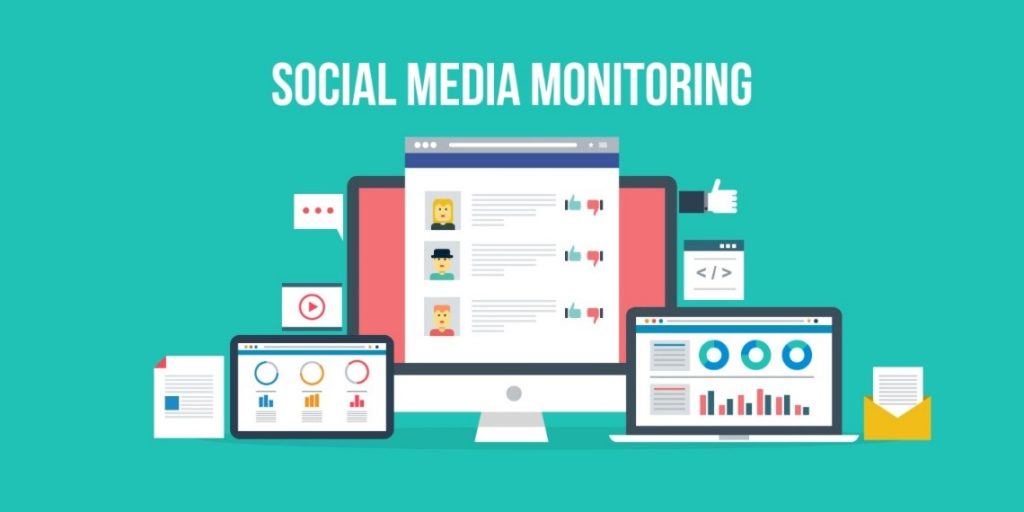
The high impact of social media marketing on businesses resulted in an increased budget in this area. To effectively utilize the increased budget a great insight into the KPIs is required. In simple terms, these are the values used to measure the performance of Social Media campaigns.
In this article, I will help you understand the effectiveness of your social media metrics, and decide what you should monitor and how to interpret the data. You will get an idea of how vital analytics are.
The Metrics that Matter
Measuring just for having metrics is useless. Instead, use the data to find out what is successful, what is not, and how you can use the data to improve.
Basically, there are two types of social media measurement:
- Ongoing Analytics: It is the ongoing process of listening to social media channels to track and gather what the audience is saying about the business. It is a one-time setup and it just requires a regular check to see how everything is going.
- Campaign-Focused Metrics: It is the metrics to understand the impact of your targeted marketing efforts. It varies depending on your specific campaign goal for each.

Steps to Measure Social Media Campaigns
- Determine the Goal and Metrics
- Measure
- Monitor and Report
- Adjust and Repeat
Determine the Goal and Metrics
When you are ready to run a campaign on Social Media, you first decide what you want to achieve or gain out of the campaign. Besides that, you also decide on which social media channels are relevant to those goals.
The first actual task is to draw a list of what you are trying to achieve from your efforts. The second step is to decide the social media channels, the information, and the content format depending on the audience you want to reach.
The next and most important decision is the ‘Call to Action’ i.e. What you want your audience to do with your content – do you want them to read, share, reply, click, purchase, or engage?
The following are the few common social media goals and metrics to measure for each:
- Awareness: Volume, reach, exposure, amplification, audience growth rate, and total followers with demographic information;
- Engagement: Reach, comments, replies, retweets, visitor frequency;
- Drive Traffic: Clicks, conversions, bounce rate, referral traffic;
- Ambassadors and Fans: Contributors and influencers
- Share of voice: Volume relative to closest competitors
Measure
Have you decided on the goals and listed the desired metrics? But how will you measure those?
To capture the desired metrics, you need to find tools, then you can start measuring. Here are a few options available:
- Analytics provided by the Social Media Channels
- Third-party tools
- Build your own
- Google search
- Use SocDir for a list of over 300 tools
Most of the analytics tools work in real-time so the best way is to set up tracking before starting the campaign.
If you use the analytics provided by the Social Media Channels themselves, here is a brief explanation of the analytics:

Monitor and Report
What is the use of metrics if you are not monitoring or generating reports?
It is absolutely necessary to monitor and generate the report and set a benchmark for future measurement. It is important to compare the results with the expected outcome. You should also run reports to see how your closest competitors are doing.
At this stage, it will be a good idea, depending on your specific requirements, to schedule weekly, monthly, or quarterly reporting. Irrespective of the schedule, it is also important to check the metrics regularly.
Make sure to highlight the important data to quickly understand what all the collected data mean. To simplify viewing and understanding, visualize the data by adding simple and clean graphs.
Adjust and Repeat
At this stage, you have complete social media metrics measured and available in an understandable format.
What will be your next step?
You need to regularly review the measurement plan as to how the metrics, doing, anything missing or unnecessary, changes, and improvements are required. You need to make sure that the metrics are actually helping to address your desired goals. It is crucial to monitor and measure all your social media activities and plan strategies to improve the metrics you track.
All top social networks provide the metrics directly from within the platform. Below is how you can get and learn from them.
Facebook Insights Metrics
On clicking the Insights on the page, you will see a report for that specific page containing the following sections:
Overview:
- Page Likes: Unique Page Likes received during the last seven days, compared with the previous seven-day period.
- Post Reach: unique people who have viewed your content, including ads, during the last seven days.
- Engagement: unique people who have clicked, liked, and commented on or shared your posts during the last seven days.
Overview of the social media engagement metrics:
- Reach: The number of people in the first 28 days who have viewed your post in the News Feed on Desktop and Mobile.
- Engagement: The number of unique people who have clicked, liked, commented on or shared a post on your page in the last seven days.
At the bottom of this Overview page, metrics for your competitor’s Facebook Pages will be presented such as total page likes, number of new posts, and engagement.
Likes Tab: It will give you detailed metrics on trends, including likes, unlikes, organic likes, net likes (new likes minus unlikes)
Following the Likes Tab, there will be a chart showing the source of your Likes from the page itself, from related Page suggestions on other Pages, posts that other people make on your Page, and the Likes from mobile users.
Reach Tab: There will be two sets of metrics in graph format: one showing the overall organic versus paid reach, overall post Likes, comments, and shares. And the other will show the number of times people on Facebook hide your post, and report posts as spam or unlike your Page.
Posts Tab: It will show detailed metrics for individual Facebook Page posts. By default, organic versus paid reach and the post clicks, Likes, comments, and shares will be shown.
From the first drop-down, you can switch from seeing organic versus paid reach for organic versus paid impressions. Impressions are the number of times a post is displayed, whether the post is clicked or not. Reach is the number of people who received impressions of a Page post.
From the second drop-down switch to see only Likes, comments, and shares; post hides, spam reports, and unlikes; or engagement rate percentage.
People Tab: To ensure you are targeting the right audience, the ‘People Tab’ is where you can find demographic metrics.

Twitter Analytics
Twitter Analytics greets you with a 28-day summary of metrics and highlights the activity by month.
The metrics will display the number of tweets posted by you including the engagement rate, clicks on the links in the tweet, number of retweets, the number of times tweets were favorites, number of times visitors replied to the tweets, impressions, profile visits, mentions, the number of followers and the number of tweets attributed to you.
Click on any Tweet for detailed metrics on that specific Tweet.
To get a detailed breakdown of demographics, check the Audience Tab.
Instagram Analytics
Instagram Management Tools provide helpful information on the performance of your posts. To see an overview of the performance and demographic information connect your Instagram account to a Facebook page.
LinkedIn Analytics
Clicking on the Analytics Tab on your LinkedIn Page will give you detailed metrics which, besides your page views, unique visitors, and visitor demographics will include the following:
- Impressions: The number of times the update was shown to LinkedIn members.
- Clicks: The number of clicks on your posts.
- Interactions: The number of likes, comments, and shares on your update.
- Followers: The number of followers acquired.
- Engagement: The number of interactions divided by the number of impressions.
Other information includes your followers with a comparison to similar companies.
Pinterest Analytics
Pinterest Business Account Analytics will provide you with the profile activity, audience, and Pins. On the Overview screen, you can see key metrics for your profile, audience, activities, and most popular Pins.
The Pinterest Profile section will show the detailed metrics for impressions, daily viewers, and Pins.
In the Audience section the metrics for average monthly viewers, average monthly engagement, demographics, and interests will be shown.
The Activity tab displays the pinning activity, and top pins based on impressions repines clicks, and all-time favorites.
Google+ Insights
There are four sections for the metrics Google+ Insights offers:
View Insights Section
- Page views
- Post Views
- Photo views
Engagement Section
- Metrics about the posts
- Total actions
- +1’s comments and shares
- Average actions by post type
Audience Section
- Demographic overview of followers
Google Analytics
After the above social media network metrics, the most crucial metrics for businesses come out of Google Analytics.
To work around Google Analytics better, combine your goals from the above social media reports within Google Analytics to evaluate the best social media network for your business.
To fully understand how to use Google Analytics requires an exclusive article on the topic. Here I am just giving a brief account of this.
Google Analytics gives you the precise number of visitors returning or first timer. Besides that, you can find out about the most visited pages.
One vital data, i.e. engagement levels is an aspect of Google Analytics that enables you to understand if your content is engaging enough or if you need to improve your strategy.
Other important data available in Google Analytics includes Average Pages per visit, Bounce Rate, Conversion Rate, Demographics, etc.
Below, I am exploring two main sections relevant to social networks:
- Acquisition Section
- Social Referrals
To get to know which social networks are driving traffic to your website, check the Acquisition Section. This section will show the data as to which social networks are bringing traffic to your website.
The Social Referrals will show a detailed breakdown of the following metrics:
- Sessions: Display the periods of time when a user is active on your website.
- Pageviews: Number of times a page was loaded or reloaded in a browser.
- Avg. Session Duration: The average time a user stays on your website.
- Pages / Session: The average number of pages viewed per session.
These social media performance metrics are important for every business as they can help you determine which network is important to disperse your energy on.
Conclusion
The above list and explanation are not exhaustive but will give you a good start.
There are so many more ways in which the above Insights and Analytics can help you in designing your strategy, providing great value to your target audience, and improving the overall performance of your website.
Your comments are welcome. Let me know which social media platform you use most frequently and how you are using Insights!
Thanks for your blog, nice to read. Do not stop.
Hi! I just wish to give you a huge thumbs up for the excellent info you have got here on this post. I will be coming back to your web site for more soon.
Im excited to uncover this website. I want to to thank you for your time due to this wonderful read!! I definitely savored every part of it and I have you saved as a favorite to check out new things in your site.
Can I simply just say what a relief to uncover someone that truly understands what theyre talking about online. You certainly realize how to bring a problem to light and make it important. A lot more people have to check this out and understand this side of your story. I was surprised you arent more popular given that you definitely have the gift.
Everything is very open with a very clear clarification of the challenges. It was really informative. Your site is extremely helpful. Thank you for sharing!
I’m truly impressed by the deep insights and excellent ability to convey information. The knowledge you share is evident in every piece you write. It’s clear that you put a lot of effort into understanding your topics, and the results pays off. We appreciate your efforts in sharing such valuable insights. Keep up the great work!
I’m thoroughly captivated by your keen analysis and stellar writing style. Your expertise shines through in each paragraph. It’s evident that you put a lot of effort into understanding your topics, and this effort does not go unnoticed. Thank you for sharing such valuable insights. Continue the excellent job!
Just wish to say your article is as astounding. The clarity to your put up is just cool and i can think you are a professional in this subject. Fine along with your permission let me to take hold of your RSS feed to stay up to date with coming near near post. Thank you one million and please continue the gratifying work.